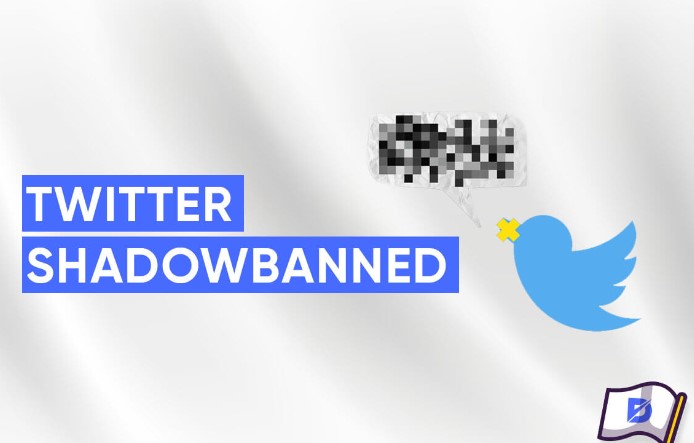In the dynamic world of social media, maintaining visibility and engagement on platforms like Twitter is crucial. However, many users may encounter a mysterious decrease in their interactions without a clear explanation, potentially falling victim to what’s known as a “shadowban.” A shadowban, while not officially acknowledged by Twitter, refers to the practice of social media platforms subtly blocking or limiting a user’s content visibility without notification. Unlike outright account suspensions or bans, a shadowbanned user’s posts are silently shown to fewer people or in some cases, only to the user themselves, making it difficult to detect.
Identifying whether you’ve been shadowbanned requires awareness of specific signs. A sudden drop in engagement, such as likes, retweets, and replies, could be a signal, especially if your content previously performed well. Additionally, if your followers report not seeing your posts in their feeds or if your tweets fail to appear in Twitter’s search results, these are strong indications of a shadowban.
Understanding and addressing shadowbans is essential not just for personal users but also for businesses and influencers whose livelihoods depend on social media visibility. Being shadowbanned can significantly impact your reach and engagement, thereby affecting your ability to communicate with your audience and grow your presence online. This introduction will guide you through the nuances of Twitter shadowbans, helping you identify signs and understand the steps you can take to both avoid and remedy such situations, ensuring your voice is heard just as loudly as ever.
Table of Contents
ToggleWhat Does It Mean to Be Shadowbanned on Twitter?
Shadowbanning is a term that sparks considerable debate and concern among social media users, particularly on platforms like Twitter. To understand shadowbanning, it’s crucial to differentiate it from more visible forms of moderation such as account suspensions or bans. Essentially, shadowbanning is the act of a social media platform discreetly restricting a user’s content reach without any notification. This can mean that the user’s posts do not appear in others’ feeds or search results, even though the account remains active and accessible to the user themselves. This practice makes it particularly insidious as the user may not immediately realize that anything is amiss.
In contrast, an account suspension or full ban on Twitter is overt — the user is explicitly informed that their account is suspended and they are unable to access their account or its features. This difference highlights the stealthy nature of shadowbanning, which can lead users to continue posting content under the mistaken belief that their usual audience still sees their posts.
The mechanics behind shadowbanning involve complex algorithmic moderation used by Twitter. The platform employs various algorithms designed to filter and manage the vast amounts of content generated by its users. These algorithms are intended to improve user experience by reducing spam, abuse, and content that violates Twitter’s community guidelines. However, they can also inadvertently impact well-meaning users. For instance, if an algorithm misinterprets frequent posting as spam-like behavior, it might limit the visibility of such posts, effectively shadowbanning the user.
Signs You Might Be Shadowbanned on Twitter
Determining whether you have been shadowbanned on Twitter can be challenging due to the subtle nature of the restrictions. However, several key indicators can help you identify if your account has been affected.
Key Indicators of a Shadowban
The most noticeable sign of a shadowban is a significant decrease in engagement. This might include fewer likes, retweets, and comments than usual, especially if such a change occurs suddenly without a clear reason. Another telling sign is when your followers report that they do not see your tweets in their feeds, despite you being active. Similarly, if your tweets are not appearing in Twitter’s search results or hashtag pages when they previously did, it’s likely that a shadowban is in effect.
Tools and Methods to Diagnose a Shadowban
Several third-party tools and methods can help diagnose a shadowban. Websites like Shadowban.eu and the Twitter Shadowban Test are specifically designed to check various aspects of your Twitter account, such as search visibility and ghost banning. These tools analyze whether your tweets appear in Twitter’s search, which is one of the key functions affected by shadowbans.
Case Studies and Anecdotal Evidence
Many users have shared their experiences with shadowbans, providing valuable case studies and anecdotal evidence. For instance, a prominent blogger noticed a sharp decline in engagement after tweeting about controversial topics, leading them to suspect a shadowban. After using shadowban testing tools, they confirmed that their tweets were indeed not appearing in searches, even when direct hashtags were used. Another example involves a social media influencer who experienced temporary shadowbans repeatedly during periods of high activity, suggesting that Twitter’s algorithms might mistake frequent posting for spam-like behavior.
Reasons Why Twitter Might Shadowban Your Account
Understanding why Twitter might shadowban an account is crucial for users who wish to maintain their visibility and avoid inadvertent penalties. Shadowbans are typically triggered by certain behaviors and content that violate Twitter’s automated algorithms and policies, designed to maintain a safe and engaging environment for all users.
Behaviors and Content That Trigger Twitter’s Algorithm
Certain activities on Twitter can trigger the platform’s moderation algorithms, which may result in a shadowban. These include:
- Spam-like activity: This often involves excessive posting or retweeting, which can flood followers’ feeds and disrupt the user experience. Twitter’s algorithms are designed to detect and limit such behavior.
- Aggressive following and unfollowing: Rapidly following and unfollowing users is a common tactic used by bots and those looking to artificially inflate their follower counts. Such behavior is flagged by Twitter as manipulative and can lead to a shadowban.
- Use of banned hashtags: Twitter periodically bans hashtags associated with harmful or misleading content. Using these hashtags can result in reduced visibility or a shadowban, as Twitter seeks to limit the spread of potentially damaging information.
The Role of User Reports and Automated Flagging
User reports play a significant role in Twitter’s enforcement actions. When multiple users report an account for spam, harassment, or other violations, this can prompt a review and potentially lead to a shadowban if the behavior continues unchecked. Automated flagging, meanwhile, refers to Twitter’s internal systems that scan for rule violations, such as hate speech or copyrighted content. These systems are sensitive to patterns that mimic previous violations, which can sometimes mistakenly target benign posts.
Insight into Twitter’s Community Guidelines and Terms of Service
Twitter’s community guidelines and terms of service provide a framework for what is considered acceptable behavior on the platform. These documents detail prohibited behaviors, such as abusive behavior, threats, hate speech, and other forms of harassment. Violating these guidelines can not only lead to shadowbans but also more severe penalties like permanent account suspension.
How to Avoid Getting Shadowbanned
Avoiding a shadowban on Twitter is crucial for maintaining your social media presence and ensuring your content reaches your audience. By adhering to best practices for responsible tweeting and engaging constructively with the community, you can reduce the risk of being shadowbanned. Here are some strategies to help you stay visible and active on Twitter without running afoul of its moderation policies.
Best Practices for Responsible Tweeting
- Tweet Regularly but Not Excessively: Find a balance in your tweeting frequency. While it’s important to stay active, overwhelming your followers with too many tweets can trigger spam filters.
- Quality Over Quantity: Focus on creating high-quality content that adds value to your followers. Avoid repetitive posts and ensure that your tweets are informative, entertaining, or educational.
- Use Hashtags Wisely: While hashtags are great for increasing the visibility of your tweets, overusing them or using banned hashtags can be detrimental. Stick to relevant, non-spammy hashtags.
Tips for Engaging Constructively with the Community
- Foster Positive Interactions: Engage with other users through comments, retweets, and likes in a positive and respectful manner. This builds your reputation as a valuable community member.
- Avoid Sensitive Content: Stay clear of posting or engaging with content that could be considered offensive or that violates Twitter’s guidelines. This includes avoiding hate speech, threats, and harassment.
- Respond to Followers’ Queries: Be active in responding to any queries or comments from your followers. This shows that you value their interaction and helps build a stronger community around your content.
Strategies to Maintain a Healthy Follower-to-Following Ratio
- Be Selective with Follows: Rather than following users indiscriminately, choose to follow accounts that are relevant to your interests or industry. This helps keep your feed valuable and engaging.
- Clean Up Inactive Follows: Regularly review whom you follow and consider unfollowing accounts that are inactive or no longer relevant. This keeps your following list clean and improves your follower-to-following ratio.
- Engage with Influential Accounts: Interacting with influential accounts can increase your visibility and attract more followers, which can positively impact your follower-to-following ratio.
Steps to Take if You Are Shadowbanned
Being shadowbanned on Twitter can significantly impede your ability to interact and engage with your audience. If you suspect that you’ve been shadowbanned, it’s crucial to take proactive steps to restore your account’s visibility. Here’s a detailed guide on how to address a shadowban effectively.
Detailed Guide on Appealing a Twitter Shadowban
- Confirm the Shadowban: Before taking any action, use tools like Shadowban.eu or the Twitter Shadowban Test to confirm whether you are truly shadowbanned.
- Review Your Recent Activity: Look back at your tweeting behavior that could have triggered the shadowban, such as the use of banned hashtags, aggressive following, or spam-like activity.
- Submit an Appeal: Although Twitter does not have a formal appeal process for shadowbans, you can still contact Twitter support to inquire about sudden drops in engagement and visibility. Clearly state your issue and ask for clarification on your account’s status.
Advice on Auditing Your Twitter Activity to Align with Twitter’s Guidelines
- Review Twitter’s Community Guidelines: Familiarize yourself with Twitter’s latest community guidelines and terms of service to ensure that none of your content is in violation.
- Examine Your Tweets and Interactions: Go through your tweets, retweets, and replies to identify any content that might have been flagged by Twitter’s algorithms. Remove or modify any tweets that could be seen as problematic.
- Monitor Your Following Practices: Ensure that your following and unfollowing patterns do not appear manipulative or spam-like, as these are red flags for Twitter’s moderation tools.
How to Engage with Twitter Support Effectively
- Be Professional and Concise: When contacting Twitter support, be clear and concise in your communication. Provide a brief explanation of the problem and any steps you’ve already taken to resolve the issue.
- Provide Evidence: If applicable, include screenshots or other evidence to support your claim. This can help clarify the issue for the support team.
- Follow Up: If you do not receive a response within a reasonable timeframe, follow up. Persistence can be crucial in getting a response from support teams.
Preventive Measures and Best Practices
Maintaining the health of your Twitter account requires ongoing attention and proactive management. By implementing preventive measures and adhering to best practices, you can avoid activities that may lead to a shadowban and ensure your social media presence remains strong and effective. Here’s how you can actively monitor your account and safeguard your engagement.
How to Continuously Monitor Your Twitter Account’s Health
- Regularly Check Your Analytics: Use Twitter’s built-in analytics tools to monitor your engagement rates, including likes, retweets, mentions, and follower growth. A sudden drop in these metrics may indicate a problem.
- Audit Your Content: Periodically review your tweets to ensure they align with Twitter’s guidelines. Look for any content that might be considered sensitive or that could potentially trigger spam filters.
- Listen to Your Audience: Pay attention to feedback from your followers. If they mention not seeing your posts or if engagement seems unusually low, these could be signs of visibility issues.
Tools and Techniques for Analyzing Engagement and Detecting Potential Issues Early
- Third-party Analytics Tools: Beyond Twitter’s own tools, consider using third-party analytics services like Hootsuite, Sprout Social, or Buffer. These platforms offer detailed insights that can help you understand your account’s performance and catch issues early.
- Engagement Monitoring Software: Tools like Brand24 or Mention can help you monitor mentions across social media, providing you with real-time alerts whenever your brand is discussed. This can be particularly useful for detecting changes in how often your content is shared or discussed.
- Routine Searches: Regularly search for your tweets and hashtags to ensure they appear in Twitter’s search results. If they don’t, this might be an indication of a shadowban.
Importance of Diversifying Your Social Media Presence to Mitigate the Impact of a Shadowban
- Expand to Other Platforms: Do not rely solely on Twitter for your social media engagement. Establishing a presence on multiple platforms like Facebook, Instagram, LinkedIn, or newer platforms like TikTok can protect you against the impact of a shadowban on any single platform.
- Cross-Promote Content: Share your content across different social media platforms to reach a wider audience. This not only increases your visibility but also creates a safety net should one account face issues.
- Create a Mailing List: Building a direct line of communication with your audience through email newsletters can significantly reduce the detrimental effects of a social media shadowban. It ensures that you can reach your audience directly, irrespective of algorithm changes or account restrictions.
Conclusion
Understanding the dynamics of shadowbans is essential for anyone actively using Twitter, whether for personal expression, business engagement, or public communication. Recognizing the signs of a shadowban and knowing the reasons behind such restrictions can help users navigate the complexities of Twitter’s algorithmic moderation, ensuring their content remains visible and impactful.
To maintain a healthy and engaging presence on Twitter, it is crucial to adhere to best practices. This includes regularly monitoring your account’s activity, engaging positively with the community, and avoiding behaviors that might trigger Twitter’s automated moderation systems. By focusing on quality content and respectful interaction, users can greatly enhance their Twitter experience and avoid potential pitfalls.
As social media continues to evolve, so too should your strategies for engagement. I encourage all Twitter users to periodically review and adjust their approaches to the platform. Stay informed about updates to Twitter’s policies and features, and continuously seek ways to improve your engagement tactics. Diversifying your social media presence can also safeguard against the impacts of shadowbans, ensuring that your reach and influence extend beyond a single platform.
FAQs About Being Shadowbanned on Twitter
- What is a Twitter shadowban?
A Twitter shadowban is when your visibility on the platform is reduced without notification, affecting how your content is shared and seen by others. - How can I tell if I am shadowbanned on Twitter?
Check for a sudden drop in engagement, use third-party tools like Shadowban.eu, or notice if your tweets are missing from Twitter search results. - What causes a shadowban on Twitter?
Engaging in spam-like behavior, using banned hashtags, and rapid following and unfollowing are common triggers for Twitter’s algorithms. - Can I appeal a Twitter shadowban?
While there’s no formal appeal process for shadowbans, contacting Twitter support to discuss unexpected drops in engagement can be a step towards resolution. - How long does a Twitter shadowban last?
The duration of a shadowban can vary, often depending on the nature of the behavior that triggered it. - What should I do if I’m shadowbanned on Twitter?
Reduce potential triggers by auditing your Twitter activity, aligning with Twitter’s guidelines, and reaching out to support for clarification. - How can I avoid getting shadowbanned on Twitter?
Post responsibly, engage positively, and avoid behaviors that Twitter’s algorithms might consider as spam or manipulation. - Does Twitter acknowledge shadowbanning?
Twitter does not officially acknowledge the practice of shadowbanning, describing their moderation as promoting “healthy conversations.” - Are certain topics more likely to get you shadowbanned on Twitter?
Topics that frequently attract spam or contentious interactions may be more scrutinized by Twitter’s moderation algorithms. - How can I check my tweets for potential shadowban triggers?
Regularly review your content for compliance with Twitter’s guidelines and moderate the use of automation and repetitive posting.







